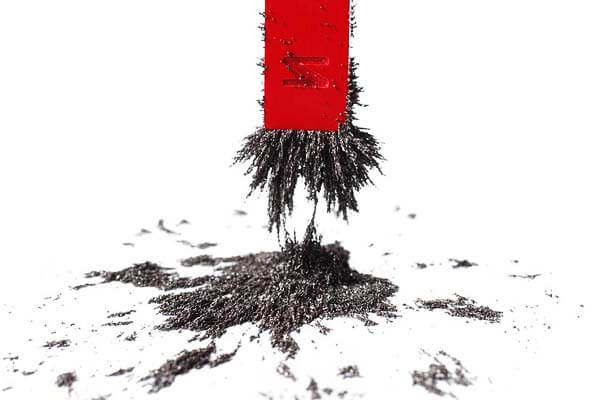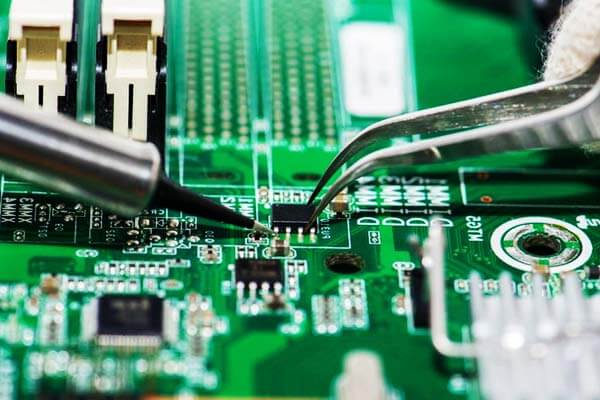1. Tabhairt isteach
Úsáidtear stáin go forleathan in iarratais éagsúla, ó tháirgeadh cóimhiotail cosúil le cré-umha go dtí a ról sa nua-aimseartha leictreonaic is sádráil.
Ach in ainneoin a úsáidí, go leor a cheapann an bhfuil aon airíonna maighnéadacha stáin.
Freagróidh an t-alt seo an cheist seo trí airíonna stáin a scrúdú, conas a iompraíonn sé i réimse maighnéadach, agus conas a théann na tréithe seo i bhfeidhm ar a úsáidí i dtionscail éagsúla. Mar sin, cuirimis tús leis!
2. Cad é Stán?
Stáin (siombail Sn, uimhir adamhach 50) tá a eilimint cheimiceach sna grúpa carbóin den tábla tréimhsiúil.

Tá sé ar eolas agus in úsáid ag daoine le breis 5,000 cinn, go príomha le haghaidh a dhéanamh cóimhiotail, go mór mór crone.
Go stairiúil, bhí stáin ríthábhachtach i bhforbairt na sibhialtachta, a úsáidtear le haghaidh uirlisí, boinn, agus earraí maisiúcháin.
Tá sé sách bog, miotal airgeadach atá frithsheasmhach in aghaidh creimeadh, rud a fhágann go bhfuil sé oiriúnach le húsáid i sádráil, chomh maith le i pacáistiú bia.
Is minic a chóimháiltear stáin le miotail eile, mar shampla copar, luaidhe, agus antamón, chun ábhair a chruthú a bhfuil airíonna feabhsaithe acu.
Mar shampla, cruach stánphlátáilte a úsáidtear go forleathan sa tionscal bia agus dí le haghaidh a chruthú cannaí stáin a chaomhnaíonn bia ar feadh tréimhsí fada.
3. An bhfuil stáin mhaighnéadach?
Anois, tugaimid aghaidh ar an bpríomhcheist: Tá stáin maighnéadach?

Míniú Eolaíoch ar Airíonna Maighnéadacha Stáin
Is é an freagra thar cuimse níl, nach bhfuil stáin maighnéadach. Tá sé seo toisc go bhfuil stán a neamh-ferromagnetic miotal trom.
Ábhair ferromagnetic, mar shampla iarann, nicil, is cóbalt, tá siad maighnéadach mar go bhfuil a gcuid móimintí maighnéadacha adamhach ailínithe i láthair réimse maighnéadach seachtrach.
This alignment causes them to be attracted to magnets.
I gcodarsnacht, tin’s atomic structure does not allow its magnetic moments to align in such a manner, ag déanamh neamh-dhiúltach.
Even when exposed to a magnetic field, tin does not exhibit a strong attraction or repulsion.
Mar sin, tin is considered diamagnetic, meaning it is weakly repelled by a magnetic field, but the effect is almost imperceptible in practical applications.
Fachtóirí a bhfuil Tionchar acu ar Airíonna Maighnéadacha Stáin
Tin’s lack of magnetism is largely due to its electron configuration is struchtúr adamhach.
Unlike ferromagnetic metals, where unpaired electrons contribute to the magnetic behavior, tin’s electrons are paired in such a way that they do not contribute to a magnetic moment.
Mar thoradh air sin, tin does not respond to magnetic fields like iron or nickel.
4. Airíonna Maighnéadacha Stáin i gComparáid le Miotail Eile
To understand why tin behaves differently from magnetic metals, tá sé ina chuidiú é a chur i gcomparáid le miotail a thaispeánann airíonna maighnéadacha.
Léiríonn an chomparáid seo na bundifríochtaí ina struchtúir adamhach agus a n-iompraíocht i réimsí maighnéadacha.
Miotail Ferromagnetic (E.g., Iarann, Cóbalt, Nicil)
Is iad miotail ferromagnetic na hábhair mhaighnéadacha is cáiliúla.
Is maith le miotail iarann, cóbalt, is nicil airíonna maighnéadacha láidre a thaispeáint mar go bhfuil móimint mhaighnéadaigh ag a n-adamh atá in ann ailíniú le réimse maighnéadach seachtrach.
Nuair a chuirtear na miotail seo i réimse maighnéadach, ailíníonn a n-adamh sa treo céanna, ag cruthú tarraingt láidir don maighnéad.
Leis sin, is féidir ábhair ferromagnetic a mhaighnéadú go buan, a n-airíonna maighnéadacha a choinneáil fiú tar éis an réimse seachtrach a bhaint.
Miotail Paramagnetic (E.g., Alúmanam, Platanam)
Paramagnetic miotal, mar shampla alúmanam is platanam, á mealladh go lag chuig maighnéid.
Cé go bhfuil leictreoin neamhphéireáilte ag na miotail seo, níl na móimintí maighnéadacha ina n-adamh ailínithe chomh láidir leo siúd in ábhair fhearromagnetic.
Mar thoradh air sin, tá an tarraingt lag agus sealadach. Nuair a bhaintear an réimse maighnéadach seachtrach, filleann miotail pharamaighnéadacha ar a staid neamhmhaighnéadach.
Struchtúr Adamhach Stáin
Ní thaispeánann stáin an t-iompar maighnéadach céanna le hábhair ferromagnetic nó paramagnetic.
A struchtúr adamhach ní cheadaíonn sé ailíniú na móimintí maighnéadacha, ní bhíonn aon idirghníomhú suntasach le réimsí maighnéadacha dá bharr.
De thoradh, iarsmaí stáin neamh-dhiúltach agus ní choinníonn sé aon airíonna maighnéadacha tar éis nochtadh do réimse maighnéadach.
5. Feidhmchláir agus Ábharthacht Phraiticiúil Airíonna Neamhmhaighnéadacha Stáin
D’fhéadfadh go mbeadh cuma teorann ar airíonna neamh-mhaighnéadacha stáin ar dtús, ach go deimhin, cuireann siad buntáistí iomadúla ar fud na dtionscal éagsúla.
Braitheann go leor feidhmchlár ar chumas uathúil stáin chun cur i gcoinne trasnaíochta maighnéadach, Sábháilteacht a chinntiú, cruinneas, agus iontaofacht.
Déanaimis iniúchadh ar chuid de na húsáidí is suntasaí ina mbíonn tréithe neamh-mhaighnéadacha an stáin fíorluachmhar..
Leictreonaic agus Sádráil
Tá ceann de na hiarratais is suntasaí de stáin i sádráil—próiseas a bhaineann le dhá chomhpháirt mhiotail a chomhcheangal trí mhiotal filler a leá (sádróir) isteach sa chomhpháirteach.
Is príomh-chomhpháirt é stáin sa chuid is mó de chóimhiotail solder, go háirithe i stáin-luaidhe is stáin-airgid sádróir, mar gheall ar a fheabhas seoltacht, intuargainte, is neamh-dhiúltach nádúr.

Tá sé ríthábhachtach nach dtarraingíonn stáin maighnéid nó nach gcuireann sé isteach ar oibriú ciorcaid leictreonacha.
Le linn micrileictreonaic, cá háit miniaturization is cruinneas atá riachtanach, cinntíonn airíonna neamh-mhaighnéadacha stáin nach gcuireann sé isteach ar oibriú comhpháirteanna leictreonacha íogair.
D'fhéadfadh aon ábhar maighnéadach sna gléasanna bídeacha seo cur isteach nach dteastaíonn a bhfeidhmiú, mar sin is buntáiste é iompar támh an stáin timpeall réimsí maighnéadacha.
Mar shampla, fóin chliste, ríomhairí, is television sets rely heavily on soldered connections made with tin-based alloys.
Thairis sin, surface-mount technology (SMT), a standard in modern electronics, often uses tin in soldering to connect components to printed circuit boards (PCBanna).
The absence of magnetism reduces the chances of interference with the signals running through these boards, ensuring that devices function correctly without the risk of magnetic disturbances.
Cóimhiotail
Tin has been used to form important cóimhiotail for centuries. The most famous is crone, an alloy of tin and copper, ar a dtugtar le haghaidh a friotaíocht creimthe is marthanacht.
Tin also forms alloys with lead, antimony, agus miotail eile, contributing to its presence in applications ranging from jewelry go dtí páirteanna feithicleach.
The non-magnetic nature of tin in these alloys is especially important for industries like innealtóireacht mhuirí is electrical manufacturing.
Mar shampla, bronze is used in ship propellers is comhla because its corrosion resistance allows it to perform in harsh, Timpeallachtaí Mara.
Cinntíonn easpa airíonna maighnéadacha i stáin nach gcuirfidh réimsí maighnéadacha seachtracha isteach ar na cóimhiotail seo,
a d’fhéadfadh cur isteach ar shlí eile ar innealra nó ar chúis léamha míchruinn in ionstraimí íogaire.
Chomh maith leis sin, péatar, cóimhiotal stáin, copar, agus miotail eile, a úsáidtear go minic i míreanna maisiúla ar nós coinnleoir, figurines, is boinn.
Cinntíonn a n-airíonna maighnéadacha íseal nach gcuireann sé isteach ar phróisis déantúsaíochta, agus déanann a sheen tarraingteach é an-oiriúnach d'fheidhmchláir ealaíne.
Tionscal Bia agus Dí
Cumas stáin seasamh in aghaidh creimeadh agus a neamh-imoibríoch déanann nádúr an rogha is fearr do phacáistiú, go háirithe sna tionscal bia agus dí.
Cannaí stáin Baineadh úsáid astu leis na céadta bliain chun bia a chaomhnú trí ábhair shalaithe agus aer a chosc ó dhul isteach.

Murab ionann agus miotail eile, ní imoibríonn stáin leis an ábhar atá sa channa, ag cinntiú go bhfanann an bia úr agus sábháilte le hithe.
Buntáiste mór amháin a bhaineann le hairíonna neamh-mhaighnéadacha stáin i bpacáistiú bia ná go seachnaíonn sé cur isteach le linn an phróisis séalaithe agus déantúsaíochta..
Línte canning is trealamh táirgeachta go minic córais mhaighnéadacha a ionchorprú chun táirgí a láimhseáil.
Cinntíonn easpa maighnéadais i stáin nach bhfuil aon bhaol ann smionagar a mhealladh nó cur isteach ar an innealra,
rud a chuirfeadh isteach ar an bpróiseas pacáistithe ar shlí eile nó a d’fhágfadh éilliú.
Thairis sin, cruach stánphlátáilte a úsáidtear go coitianta i dtáirgeadh na cannaí,
toisc go gcoisceann an sciath stáin meirge agus creimeadh, ag tairiscint seilfré níos faide do tháirgí.
Mar shampla, cannaí sóide is glasraí stánaithe ag brath ar na buntáistí a bhaineann leis an neamh-mhaighnéadach, miotail neamh-imoibríoch chun stóráil shábháilte agus éifeachtach a chinntiú.
Feidhmeanna Leighis agus Cógaisíochta
I réimse an leighis, stáin neamh-dhiúltach airíonna tairbheach nuair a úsáidtear i áirithe feistí so-ionchlannaithe is uirlisí leighis.
Roinnt uirlisí máinliachta agus ionchlannáin—mar na cinn a úsáidtear i nósanna imeachta fiaclóireachta—
a cheangal ar úsáid na ábhair neamh-mhaighnéadacha chun comhoiriúnacht le MRI (Íomháú Athshondais Mhaighnéadaigh) meaisíní.
Mar gheall ar nádúr neamh-mhaighnéadach stáin is rogha iontach é d'iarratais den sórt sin, aon chur isteach ar theicneolaíocht íomháithe a chosc a d’fhéadfadh torthaí diagnóiseacha a chur i mbaol.
Chomh maith, déantúsaíochta cógaisíochta freisin úsáid as stáin le haghaidh a cobhsaíocht is táimhe i dtáirgeadh coimeádáin agus trealaimh.
Tá sé seo ríthábhachtach go háirithe maidir le pacáistiú comhdhúile íogaire nó leigheasanna,
i gcás ina bhféadfadh fiú an cur isteach maighnéadach is lú an struchtúr ceimiceach nó an t-ábhar atá sa druga a athrú.
Feidhmchláir Speisialaithe Eile
- Aeraspás: Tá friotaíocht stáin in aghaidh trasnaíochta maighnéadach tairbheach freisin in iarratais speisialaithe mar aeraspás teicneolaíochtaí.
Úsáidtear cóimhiotail stáin in ionstraimí beachta agus comhpháirteanna nuair is gá tomhais chruinne a dhéanamh, agus d'fhéadfadh míchruinneas a bheith mar thoradh ar airíonna maighnéadacha.
Leis sin, an tréithe neamh-mhaighnéadacha atá úsáideach i córais radair is ionstraimí loingseoireachta, áit a bhféadfadh ábhair mhaighnéadacha a bheith ina gcúis le saobhadh comhartha. - Bratuithe agus Miotail Stánphlátáilte: Is minic a úsáidtear stáin mar bhratú le haghaidh cruach is miotail eile chun creimeadh a chosc.
A neamh-dhiúltach áirithíonn nádúr go gcoimeádann táirgí atá brataithe le stán a n-ionracas in iarratais ina bhféadfadh trasnaíocht mhaighnéadach a bheith ina chúis le teipeanna,
mar atá i leictreonaic ard-minicíochta is trealamh micreathonn.
6. An Féidir Leat Stán a Mhaighnéadú?
Cé nach féidir stáin féin a mhaighnéadú, is féidir é a bheith mar chuid de chóimhiotail a thaispeánann airíonna maighnéadacha. Cén dóigh faoin spéir a ...?, ní choinneoidh stáin leis féin maighnéadas faoi ghnáthchoinníollacha.
Fiú amháin faoi thionchar réimse maighnéadach láidir, cuireann struchtúr adamhach stáin cosc air ó bheith maighnéadaithe.
7. Deireadh
Mar fhocal scoir, nach bhfuil stáin maighnéadach. Is ábhar diamagnetic é atá éirithe go lag ag réimsí maighnéadacha,
ach tá an éifeacht seo chomh íosta go bhfuil sé beagnach nach dtugtar.
Murab ionann agus miotail ferromagnetic cosúil le iarann agus nicil, ní cheadaíonn struchtúr adamhach stáin ailíniú maighnéadach, rud a fhágann go bhfuil sé neamh-mhaighnéadach.
Cé go bhféadfadh sé seo cosúil le teorainn, tá easpa maighnéadas stáin tairbheach i go leor feidhmeanna, go háirithe i leictreonaic, cóimhiotail,
agus an tionscal pacáistithe bia, i gcás ina mbeadh trasnaíocht mhaighnéadach díobhálach.
Airteagal gaolmhar: https://casting-china.org/is-stainless-steel-magnetism/



